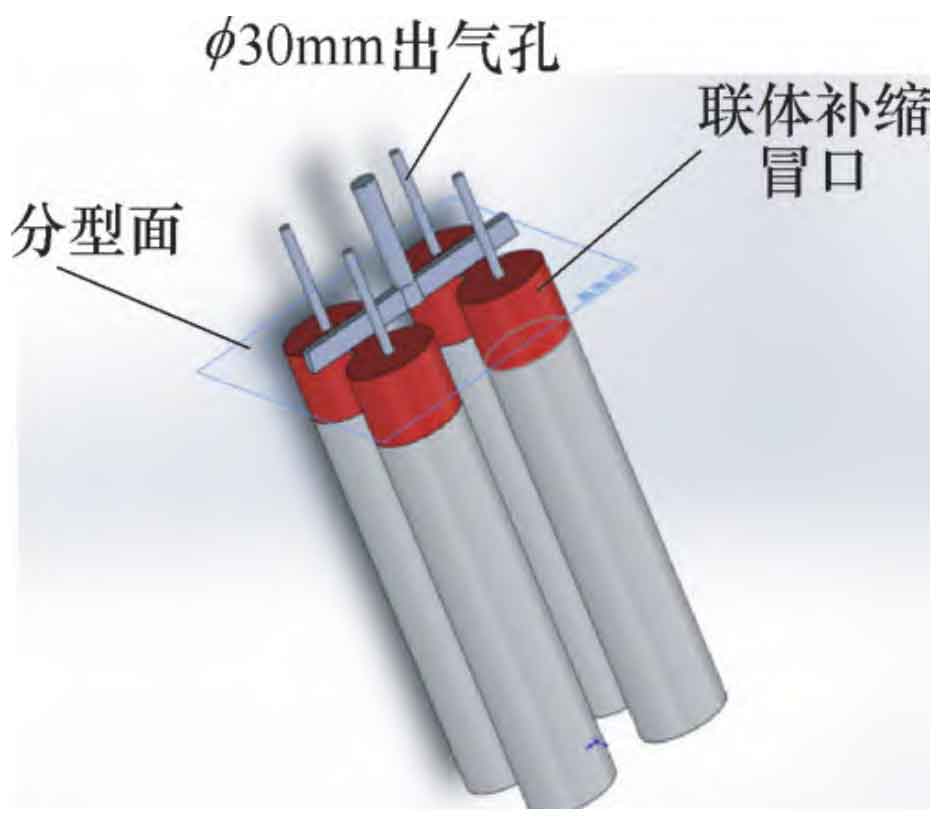1. Molding operation process
In the original process (see Figure), the type is divided from one end, and the gray cast iron is placed in the lower box. In order to ensure the advantage of gravity feeding, a large gravity head is required, so the height of the upper box cannot be less than 300mm. The height of the sand box after the molding is combined is more than 1700mm. When using two boxes of molding, the coating is inconvenient to brush, and the combustion after brushing is not sufficient, resulting in sand sticking on the surface and affecting the quality of gray cast iron. If three box molding is adopted, the on-site operation process is complex, the sand iron is relatively high, the molding sand is used more, and the molding cost increases.
2. Solidification method
According to the principle of sequential solidification, the original process adopts sequential solidification from bottom to top, and the gray cast iron is fed by gravity. Due to the wide crystallization temperature range of gray cast iron, coupled with the cooling of sand mold and air outlet, the shell of the upper section of gray cast iron crusts rapidly, which can not meet the requirements of sequential solidification from bottom to top. Shrinkage porosity or shrinkage cavity casting defects are easy to appear 150 ~ 200mm down on the top surface of gray cast iron, and the gray cast iron can be scrapped in serious cases, Gray cast iron is determined by its own characteristics and is not easy to realize sequential solidification.
3. Gating system and riser
Starting from the quality of gray cast iron, the production experience of the original process is summarized. The top is increased by 200mm as the conjoined feeding riser to move the casting defects up and remove them in the processing process, so as to basically meet the quality requirements of gray cast iron. Originally, the gating system was used for feeding. In order to facilitate feeding, the section of the inner sprue was high trapezoid, but the inner sprue could not be closed in time at the later stage of liquid solidification, and the graphitization expansion could not be better used to feed the subsequent solidification shrinkage. Therefore, the defects of shrinkage porosity and shrinkage cavity were easy to appear in the parts of gray cast iron that solidified late. Using this gray cast iron production process, not only the yield of gray cast iron is low, but also the processing cost is increased when cutting off the conjoined feeding riser, and the quality of gray cast iron can not stably meet the requirements.

